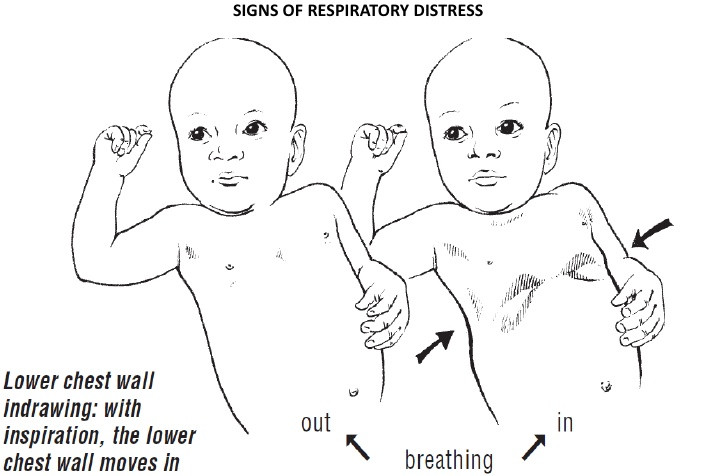Early signs of pneumonia in children during the cold season
The pneumonia starts quickly and suddenly with signs of fever, cyanosis, rapid breathing, like the common flu, but the characteristic symptom is the concave chest depression when breathing.
On the occasion of the 12th World Pneumonia Prevention Day, Dr. Truong Huu Khanh, Head of Infection - Neurology, Children's Hospital 1 said Vietnam is among the 10 countries with the highest number of new cases of pneumonia gender. It is estimated that there are about 2.9 million new children each year. Worldwide, 920,000 children under 5 years of age die from pneumonia in 2015, more than Zika, Ebola, malaria, tuberculosis and HIV combined.
Pneumonia is a disease of the lower respiratory tract infection, characterized by alveolar lesions and tissue surrounding the alveoli in the lungs. The highest incidence of pneumonia is in children under 2 years of age and people over 65 years old. The disease is quite close to the common symptoms of flu so it is easy to confuse or overlook, ignore.

Young pneumonia characterized with signs of chest concave breathing.(Photo: slidesharecdn).
Pneumonia is often rapid and sudden onset with signs of chills, fever, chest pain when breathing or coughing, coughing spotting rusty color, fatigue, loss of appetite, difficulty breathing, sputum, coughing up blood due to blood flowing from a certain part of the respiratory tract .
In children, diagnostic help signs include:
- Young fever, cyanosis, respiratory failure.
- Especially fast breathing. Children under 2 months, breathing> 60 times a minute. Children 2 to under 12 months of breathing> 50 times a minute. Children 12 months to 5 years> 40 times a minute.
- The child heaved his nose, bending his chest while breathing.
When children have abnormal signs, they should be taken to a medical facility, absolutely not self-treating antibiotics at home.

Pneumonia contributes to the Department of Respiratory Children's Hospital often overloaded with 4-5 children per bed.(Photo: HN).
Pneumonia is caused by many different pathogens , including bacteria, viruses, fungi and parasites. Bacterial and viral illnesses are usually spread by spreading fluids from a patient's nose or mouth. Pneumococcal bacteria (Streptococcus pneumoniae) are the leading cause of pneumonia in children, most commonly spread by air when coughing, sneezing and spreading through contact with an infected person or a healthy person bacteria in humans.
According to Dr. Khanh, prevention is done by using clean water, regularly washing hands with soap, avoiding tobacco smoke and environmental pollution, improving indoor air. Breastfeeding for the first 6 months, vaccination for pneumococcal vaccine.
- Simple way to prevent pneumonia for children during the season
- Instruct mothers to identify children with pneumonia with their eyes at home
- How to prevent respiratory disease during the season
- Pneumonia in young children - Dangerous but difficult to identify
- Pneumonia: Causes, symptoms and treatment
- The temperature dropped deeply, the people in Hanoi felt the cold early in the season
- 4 warm 1 cold rule protects children in cold 7 days
- Young diseases are prone to cold wind in the early season
- How to prevent pneumonia when the weather is seasonal
- Chickenpox easily attacks young children in the cold season
- How to treat colds and colds
- Why are early season food expensive like gold that Japanese people still compete to buy?
 Green tea cleans teeth better than mouthwash?
Green tea cleans teeth better than mouthwash? Death kiss: This is why you should not let anyone kiss your baby's lips
Death kiss: This is why you should not let anyone kiss your baby's lips What is salmonellosis?
What is salmonellosis? Caution should be exercised when using aloe vera through eating and drinking
Caution should be exercised when using aloe vera through eating and drinking